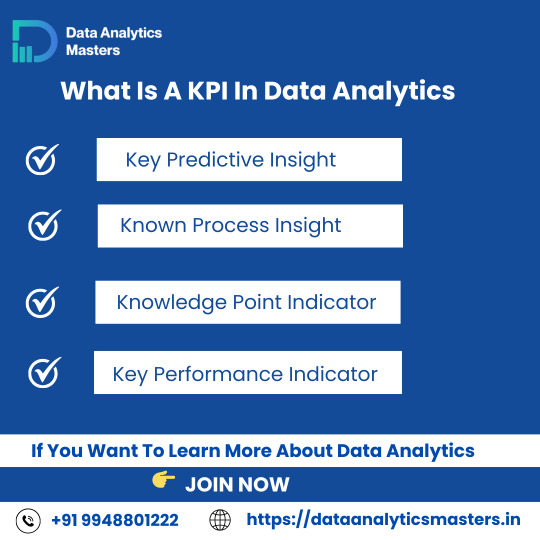#KeyPerformanceIndicator
Explore tagged Tumblr posts
Text
Google Cortex Framework helps Mars Wrigley With agile media

In agile media trials, Mars Wrigley monitors sales boost using EPAM and Google Cortex Framework. Consumer packaged goods brands invest heavily in advertising to boost brand loyalty and sales. Campaigns are often optimised by tracking media-in-progress data against methods like audience targeting. Since most transactions are made in person, it's hard to link media sales to target audiences when ads are running.
Mars Wrigley's gold standard key performance indicator KPI for advertising success, incremental sales, is not associated with “total ad sales,” which many solutions employ. How can you tell whether your advertising expenditure is working when improving in-flight campaigns? Mars Wrigley is using EPAM and the Google Cortex Framework to provide an agile way for accurately measuring in-flight audience efficacy based on incremental sales.
Use Cortex to Maximise Client Digital Advertising Investments
Global advertising spending will top $1 trillion in 2024. By 2029, digitalisation will reach 69% and 85%. Digital advertising is being significantly disrupted, so deciding where to invest is more crucial than ever to make the right decisions for your brand. EPAM helps businesses link marketing and sales data to better corporate performance. That means what? Google Cloud helps marketers understand and maximise media spending. It does this by making relevant data available, converting it into useful information, providing insights, and highlighting company-supported KPIs.
Mars Wrigley method
Mars Wrigley: Connecting data to audience insights Mars Wrigley chose to analyse its own data after examining several choices. This material was scattered throughout media and retail outlets. The company used Google Cortex Framework, which uses pre-built data connectors and standardised data models to quickly integrate media data from YouTube with retailer sales data, to create a unified view of ad impact in BigQuery. Mars Wrigley can now see how audience targeting methods in its media investments are increasing sales across key consumer groups by integrating data in BigQuery and using built-in data science tools like BQML. Geo-targeted control and audience testing in Designated Market Areas (DMAs) may be achieved by selecting businesses with similar sales tendencies. Mars Wrigley may split its viewers into different groups with control groups to test and track advertising performance in real time to maximum sales lift.
Google Cloud Cortex Framework
The Google Cortex Framework accelerates perceptions and judgements. Accelerated access to an AI-enabled data core helps Mars Wrigley succeed in media. Google Cortex Framework provides instant insights with its pre-made and flexible analytics content and simple integration with Google Ads, YouTube, TikTok, Meta, and more.
Previously, it had problems gauging audience performance in flight. Google Cloud Google Cortex Framework found the solution in internal data. It partnered with EPAM Systems to use internal data sources and experiment based on real sales lift. This allowed us to make critical data-driven decisions and addressed a tool portfolio measurement gap.
By implementing the Google Cortex Framework, Mars Wrigley is improving its media sales knowledge and enabling a more data-driven and adaptable consumer packaged products marketing approach. This method has these primary benefits: Agile hypothesis testing With insights in-house, testing hypotheses and adjusting approaches is much faster. Scalability The design enables adding retail clients and media investment data easy. Versatility Mars Wrigley may utilise Google Cortex Framework for audience testing, shopper media, media formats, and content variations.
#GoogleCortexFramework#keyperformanceindicator#ArtificialIntelligence#GoogleCloud#EPAM#DigitalAdvertising#GoogleCloudCortexFramework#govindhtech
0 notes
Text
Top 20 chỉ số KPI trong Marketing quan trọng nhất
KPI trong Marketing là những chỉ số quan trọng được sử dụng để đánh giá hiệu suất của chiến lược tiếp thị và các hoạt động quảng cáo. Hiểu rõ KPI trong Marketing sẽ giúp bạn đánh giá hiệu quả của các chiến dịch hiện tại, xác đ��nh những điểm cần cải thiện và xây d��ng, triển khai các chiến lược đảm bảo hiệu quả hơn. Nếu chưa biết mình cần áp dụng và đo lường những chỉ số nào, hãy xem bài viết: https://topchuyengia.vn/tu-van/kpi-trong-marketing
1 note
·
View note
Text

📊 What Is a KPI in Data Analytics?
Think you know what KPI stands for? Let’s test your knowledge!
✅ Key Predictive Insight
✅ Known Process Insight
✅ Knowledge Point Indicator
✅ Key Performance Indicator
💡 KPIs help you track business goals and performance like a pro!
📞 +91 9948801222 🌐 www.dataanalyticsmasters.in 📍 Location: Hyderabad
#DataAnalytics#KPIExplained#AnalyticsTraining#LearnDataAnalytics#KeyPerformanceIndicators#AnalyticsForBusiness#DataDrivenDecisions#KPIInAnalytics#DataAnalyticsMasters#BusinessIntelligence#CareerInAnalytics#BigDataLearning#UpSkillToday#AnalyticsJobs#HyderabadTech
0 notes
Text
KPI performance metrics help businesses track progress toward strategic goals. These measurable values assess efficiency, productivity, and success across various departments, including sales, marketing, finance, and IT. Strategic KPIs focus on long-term objectives, while operational and functional KPIs monitor daily activities. Metrics such as revenue growth, customer acquisition cost, and conversion rates provide insight into performance trends. Effective KPIs follow the SMART criteria—specific, measurable, attainable, relevant, and time-bound. Regular evaluation ensures alignment with business objectives, enabling companies to adapt and improve based on data-driven insights.
0 notes
Text
How KPIs Drive Strategic Decision-Making in Business
In today’s fast-paced business environment, making the right decisions at the right time is crucial for sustained growth and success. But how do business leaders and decision-makers ensure they are on the right track? The answer lies in Key Performance Indicators (KPIs). KPIs are powerful metrics that help organizations measure their performance against specific objectives, providing a clear picture of what’s working and where adjustments are needed.

In this blog, we’ll explore how KPIs drive strategic decision-making in business, helping organizations make data-driven decisions that align with their long-term goals.
What Are KPIs?
Key Performance Indicators (KPIs) are measurable values that indicate how effectively an organization is achieving its business objectives. These metrics are used to track progress toward specific targets, whether they are financial goals, operational benchmarks, or customer satisfaction levels. KPIs vary across industries and business models, but they all serve the same purpose: to provide insight into the health and performance of a business.
KPIs can be classified into two categories:
Lagging KPIs: These reflect the results of past actions, such as revenue, profit margin, or customer retention rate.
Leading KPIs: These predict future performance, like sales leads, employee productivity, or customer inquiries.
Why KPIs Are Essential for Strategic Decision-Making
Clear Direction and Focus KPIs provide a clear direction for organizations, ensuring everyone from top management to individual employees is aligned with the company’s goals. By measuring and tracking KPIs, businesses can assess whether their strategies are on track or need refinement. Without KPIs, decision-makers would have to rely on intuition and guesswork, which can lead to costly mistakes.
Informed Decision-Making KPIs offer valuable, data-driven insights that empower leaders to make decisions based on facts rather than assumptions. By tracking the right KPIs, businesses can identify trends, gaps, and opportunities that may have otherwise gone unnoticed. For instance, if a company’s sales KPIs show a consistent decline, leadership can make informed decisions to investigate the root cause and implement corrective actions.
Objective Evaluation of Performance KPIs help businesses evaluate performance objectively. Whether it’s measuring the success of a marketing campaign or assessing operational efficiency, KPIs provide an unbiased way to understand performance. This objectivity is critical when making strategic decisions because it removes emotions and subjective views from the equation.
Goal Alignment KPIs ensure that an organization’s strategies and tactics are aligned with its overall goals. Whether a business is looking to increase revenue, reduce costs, or improve customer satisfaction, KPIs help track progress toward these objectives. For example, if the strategic goal is to increase market share, KPIs related to sales growth and customer acquisition will directly inform decision-making.
Tracking Progress and Performance KPIs allow organizations to monitor their progress over time, providing a snapshot of how well they are performing against their strategic objectives. Regular tracking helps to identify any areas of concern early on, allowing leadership to pivot or adjust strategies to keep the business on course.
Resource Allocation and Optimization KPIs help in making strategic decisions about where to allocate resources. For example, if a business is tracking customer satisfaction and notices a dip in a specific area, they might decide to invest more resources in customer service training or process improvements. By focusing resources on areas that require attention, businesses can improve efficiency and increase the likelihood of achieving their goals.
How KPIs Influence Strategic Decisions
Market Expansion Decisions KPIs play a critical role when companies are considering expanding into new markets. By analyzing KPIs such as sales growth, market penetration, and customer demand in existing regions, businesses can determine whether it makes sense to venture into new geographical areas or product categories. Leading KPIs like market trends and customer interest can guide these expansion strategies.
Product Development and Innovation Businesses must continuously innovate to stay ahead of the competition. KPIs related to customer feedback, product usage, and revenue generation can help organizations identify opportunities for new products or services. For example, a company tracking product performance might notice that certain features are more popular than others, prompting the development of new product versions or enhancements.
Marketing Strategy Optimization Marketing decisions are heavily influenced by KPIs such as conversion rates, customer acquisition cost, and return on investment (ROI) from advertising campaigns. By analyzing these metrics, businesses can adjust their marketing tactics to maximize efficiency and drive conversions. For instance, if a certain marketing channel yields high ROI, businesses can allocate more budget to that channel, while scaling back on less effective campaigns.
Cost-Cutting and Efficiency Improvements KPIs related to operational efficiency, such as cost per unit or inventory turnover, can guide cost-cutting initiatives and process optimizations. If a business notices that its operational KPIs are not meeting targets, leadership can make data-driven decisions to improve efficiency, reduce waste, and increase profitability.
Talent Management and HR Decisions KPIs related to employee performance, retention rates, and workforce productivity are essential for making HR decisions. For example, a business might use employee satisfaction and engagement KPIs to identify areas where the company can improve its workplace culture or retention strategies. Similarly, KPIs related to recruitment efforts, like time-to-hire and cost-per-hire, can help streamline hiring processes and ensure the right talent is brought on board.
Best Practices for Using KPIs to Drive Strategic Decision-Making
Select the Right KPIs Not all KPIs are created equal. Choose KPIs that directly align with your organization’s goals and objectives. Focus on metrics that provide meaningful insights into performance and help guide decision-making.
Monitor KPIs Regularly KPIs should be tracked consistently and updated regularly. Monitoring them frequently ensures that decision-makers have access to the most current data, allowing them to act quickly when necessary.
Be Flexible and Adaptable KPIs are not static; they should evolve as your business changes. If a particular KPI is no longer relevant or doesn’t provide useful insights, replace it with one that aligns better with your strategic objectives.
Ensure Cross-Functional Alignment Different departments within an organization may have different KPIs, but it’s important that these KPIs align with broader business goals. Cross-functional collaboration ensures that all teams are working toward the same objectives, improving overall strategic execution.
Combine Leading and Lagging KPIs Both leading and lagging KPIs are important. Leading KPIs offer predictions and early warnings, while lagging KPIs provide feedback on past performance. A combination of both helps to create a more complete picture of the business landscape, guiding more effective decision-making.
Conclusion
KPIs are much more than just numbers—they are the foundation for data-driven decision-making. By providing a clear picture of how a business is performing, KPIs help leaders make informed, strategic decisions that drive success. Whether evaluating market opportunities, optimizing marketing strategies, or improving operational efficiency, KPIs ensure that decisions are based on objective, actionable insights.
Incorporating KPIs into your decision-making process will not only improve the accuracy of your business strategies but also create a culture of accountability and performance measurement. As the business landscape continues to evolve, leveraging KPIs will remain an essential tool for organizations seeking long-term growth and success.
#KPIs#StrategicDecisionMaking#BusinessStrategy#DataDrivenDecisions#BusinessGrowth#PerformanceMetrics#KeyPerformanceIndicators#BusinessSuccess#GoalSetting#BusinessManagement#OperationalExcellence#MarketingStrategy#EfficiencyOptimization
0 notes
Text

#DataAnalytics#Startups#PredictiveAnalytics#DescriptiveAnalytics#manufacturer#healthcare#retrail#ecommerce#bigdata#fintech#PrescriptiveAnalytics#MachineLearningAlgorithms#KeyPerformanceIndicators
1 note
·
View note
Text

Top 5 reasons why you should use Balanced Scorecard for Strategic Management in Manufacturing Industry A Balanced Scorecard framework can elevate your strategic management process through Giving Structure to Strategy, Holistic measurements, Organisational & Process Alignment, Planning & Execution and Data-Driven Decision-making For more details read our blog : https://balancedscorecard.ltslean.com/software-blog/manufacturing-balancedscorecard-for-strategic-management
#BalancedScorecard#Performancemanagementscorecard#BSCSoftware#StrategicManagement#StrategicPlanning#Balancedscorecardimportance#Strategymap#Organisationalstrategy#KeyPerformanceIndicators#Organisationperformance#ManufacturingStrategies#Performancemeasurement#Fourperspectives#Profitability#operationalefficiencies#customersatisfaction
0 notes
Text
Embracing Agile: Revolutionizing Project Management
In today's fast-paced business environment, adaptability and swift responses to change are crucial. The Agile methodology, originally developed for software development, has transcended its origins and become a transformative approach for various industries. Agile emphasizes iterative progress, collaboration, and flexibility, making it a powerhouse in modern project management. Here’s why adopting Agile can be a game-changer for your organization.
#Agile#Agileprojectmanagement#AgilePM#Agileprojectmanager#scrum#projectmetrics#dashboardmetrics#projectkpis#projectmanagementkpis#keyperformanceindicators#PMtrends#projectmanagertrends#projectmanagementtrends#futureprojects#PMcareers#Projectmanagement#PMO#ProjectManager#BusinessAnalyst#ProgrammeManager#Governance#ScrumMaster#Planning#Projecttemplates
1 note
·
View note
Text

"📈 Ready to make 2023 your year in direct selling? Uncover the secrets of success with our latest blog post, featuring the 10 must-monitor KPIs for a thriving business. 💼💪
Learn more : https://infinitemlmsoftware.com/blog/direct-selling-kpis/
#directselling#KPIs#directsellingKPIs#networkmarketing#KPI#KPI's#KPI's2023#keyperformanceindicators#directselling2023#growth#success
0 notes
Text

5 Reasons Why You Need KPIs?
With years of experience and expertise in the recruitment industry, TDS Group is your trusted partner in helping you understand and implement effective KPIs. We provide valuable insights and strategies, enabling you to make informed decisions and optimize your recruitment processes.
Call us at 0172-5090668, WhatsApp No. 7527003884
Visit or DM us at https://tdsgroup.in/
For Job Application, Apply here https://tdsgroup.in/career/ . . . . . .
#tdsgroup#placementagency#keyperformanceindicators#progress#stayontrack#recruiters#jobopportunity#upliftyourcareer#employmentagency
0 notes
Video
youtube
Measurable Goals: The Key to Strategic Management Success for Small Business discover how setting measurable goals can transform the strategic management of your small business. Learn how to break down broad objectives into specific, achievable goals using the SMART criteria. From developing Key Performance Indicators (KPIs) to effective communication and continuous monitoring, we show you how to keep your business on the path to success. Visit us at adminservicespr.com to book your initial consultation and take the next step towards growing your business.Relevant Hashtags:#StrategicManagement #MeasurableGoals #SMARTGoals #SmallBusiness #KeyPerformanceIndicators #BusinessGrowth #BusinessStrategy #ConsultingServices #AdminServicesPR #BusinessSuccess
0 notes
Link
#Controllinginstrument#ExcelDatei#ExcelVorlage#Excel-Tool#KeyPerformanceIndicator#KeyResult#Objective#ObjectivesandKeyResults#OKR
0 notes
Photo

Dailing may be different but not so much at Hello. Content Collective Studios
0 notes
Text

There are some key KPIs for ERP implementation. KPI is a key performance indicator. ERP execution can be estimated utilizing a scope of key execution markers (KPIs). Here is a detailed guide on KPI. Grab the complete information
#erp#erpimplementation#KPI#keyperformanceindicator#kpiforerpimplementation#kpierp#kpierpsystem#erpsolution#erpsoftware
0 notes
Text
What is KRA

The full form of KRA is the Key responsibility area or key result area. It defines the job role and responsibility of an employee. KRA is developed by the company to evaluate the performance of the employees in an organized manner.
When it comes to calculating performance, then KRA and KPI are two important measurable values that help seniors to measure success.
Measuring success, growth, and goals is the most important factor of a business. Also tracking performance is essential because it gives you a clear image of your work journey: What are you doing, what problems you are facing, goal achievement time, etc.
Importance of KRA
KRA is important for determining and calculating the critical area of development that is aligned with the strategic concept and goals of the company. Also, employees of the department align them together with the vision of the company
KRA Enable the departments to have clarity and a better experience of their departmental job responsibilities and fairly distribute the work.
KRA helps in understanding the scope and expandation of an individual service or product
KRA is a set of goals and objectives that each organization assigns to its employees at the start of the evaluation period.
Increasing revenue is the highest goal of every company. So sales and marketing departments must define KRAs for long-term success.
KRA tells you the employee productivity of the particular company.
KRA improves internal and workplace communication. Communicates updated plans to employees.
KRAs will help you to understand how far the employee reached. and those goals if the employee achieved then they can be given more responsibilities.
0 notes